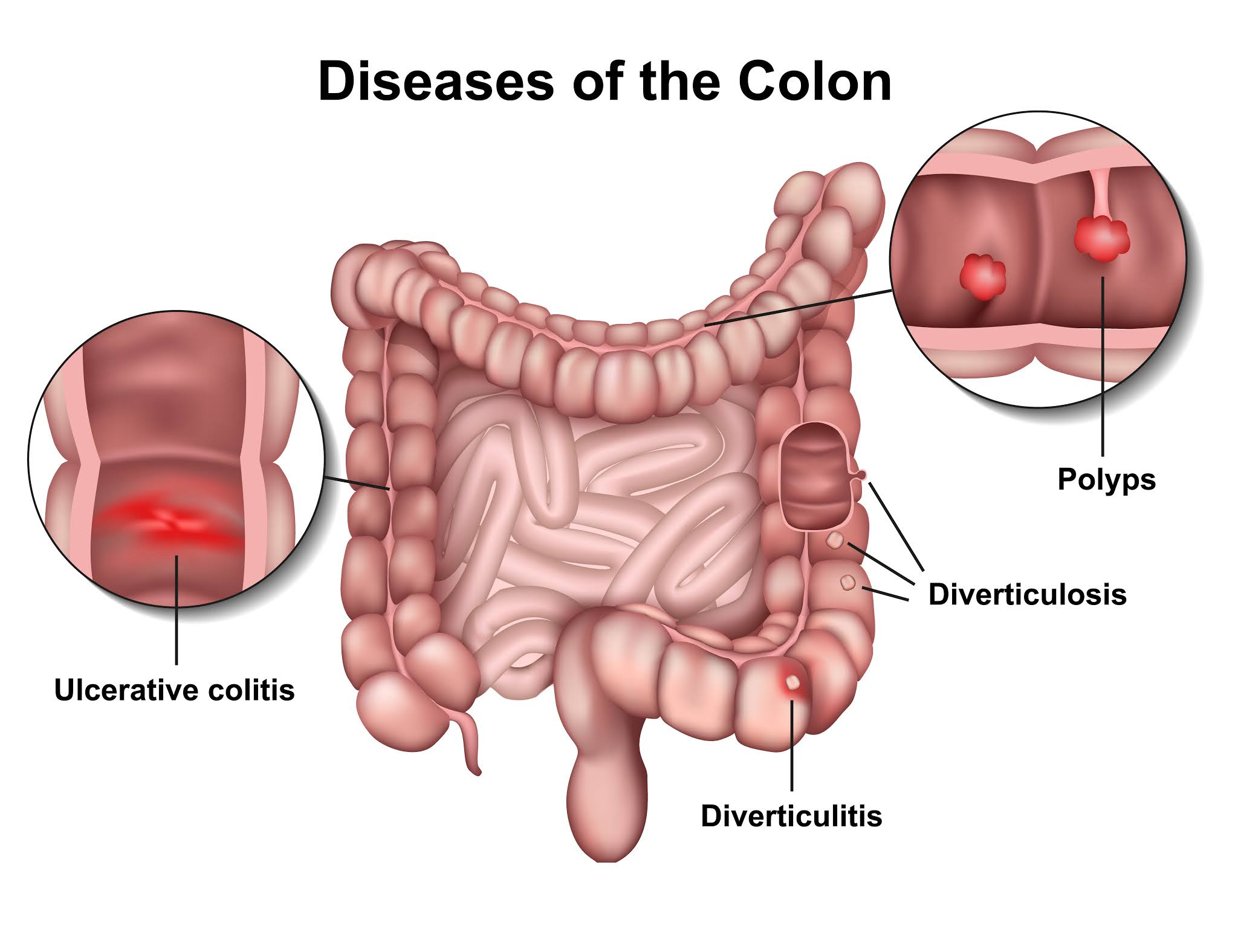Polyps Diverticulitis: Colon Polyps and Diverticulitis Differences and Relationship
What are the differences between colon polyps and diverticulitis? What is the relationship between these two conditions? Let’s explore the details.
Understanding Colon Polyps and Diverticulitis
Colon polyps and diverticulitis are two distinct gastrointestinal conditions, but they can be related in certain cases. Colon polyps are growths that develop on the inner lining of the colon, while diverticulitis is an inflammation or infection of small, bulging pouches (diverticula) in the colon.
Colon Polyps: Types and Characteristics
Colon polyps can be classified into several types, including:
- Adenomatous polyps: These are the most common type of colon polyps and have the potential to develop into colorectal cancer if left untreated.
- Hyperplastic polyps: These are generally considered non-cancerous, although they can sometimes develop into adenomas or carcinomas.
- Inflammatory polyps: These polyps are associated with inflammatory bowel diseases, such as ulcerative colitis and Crohn’s disease.

Diverticulitis: Causes and Symptoms
Diverticulitis occurs when small, bulging pouches (diverticula) in the colon become inflamed or infected. The exact cause of diverticulitis is not fully understood, but factors such as a low-fiber diet, obesity, and aging are believed to contribute to its development. Symptoms of diverticulitis include abdominal pain, fever, nausea, and changes in bowel habits.
The Relationship between Colon Polyps and Diverticulitis
While colon polyps and diverticulitis are distinct conditions, they can be related in some cases. Inflammatory polyps, which are a type of colon polyp, have been associated with diverticular disease. These inflammatory polyps, also known as giant inflammatory polyps (GIPs), can develop in patients with long-standing diverticular disease.
Inflammatory Polyps in Diverticular Disease
Inflammatory pseudopolyps (IPPs) are a common manifestation in inflammatory bowel diseases, such as ulcerative colitis and Crohn’s disease. However, these polyps can also develop in patients with diverticular disease, as evidenced by a retrospective analysis that found 26% of IPPs were associated with diverticular disease.

Mechanism of Inflammatory Polyp Formation
The formation of inflammatory polyps in diverticular disease is thought to be similar to the process seen in inflammatory bowel diseases. During episodes of diverticulitis, mucosal edema and chronic inflammation develop in the colon, leading to the formation of these polyps.
Giant Inflammatory Polyps: A Potential Malignant Masquerader
When these inflammatory polyps grow larger, they are called giant inflammatory polyps (GIPs). GIPs can become quite large, sometimes mimicking the appearance of a colorectal carcinoma. In rare cases, there have been reports of dysplasia developing in GIPs in patients with inflammatory bowel disease, emphasizing the importance of careful evaluation to exclude any neoplastic processes.
Diagnostic Challenges and Management
Diagnosing GIPs can be challenging, as they can appear similar to other colon masses or tumors. Colonoscopy and imaging studies, such as computed tomography (CT) scans, may be necessary to differentiate GIPs from other conditions. In some cases, surgical resection may be required for definitive diagnosis and treatment.
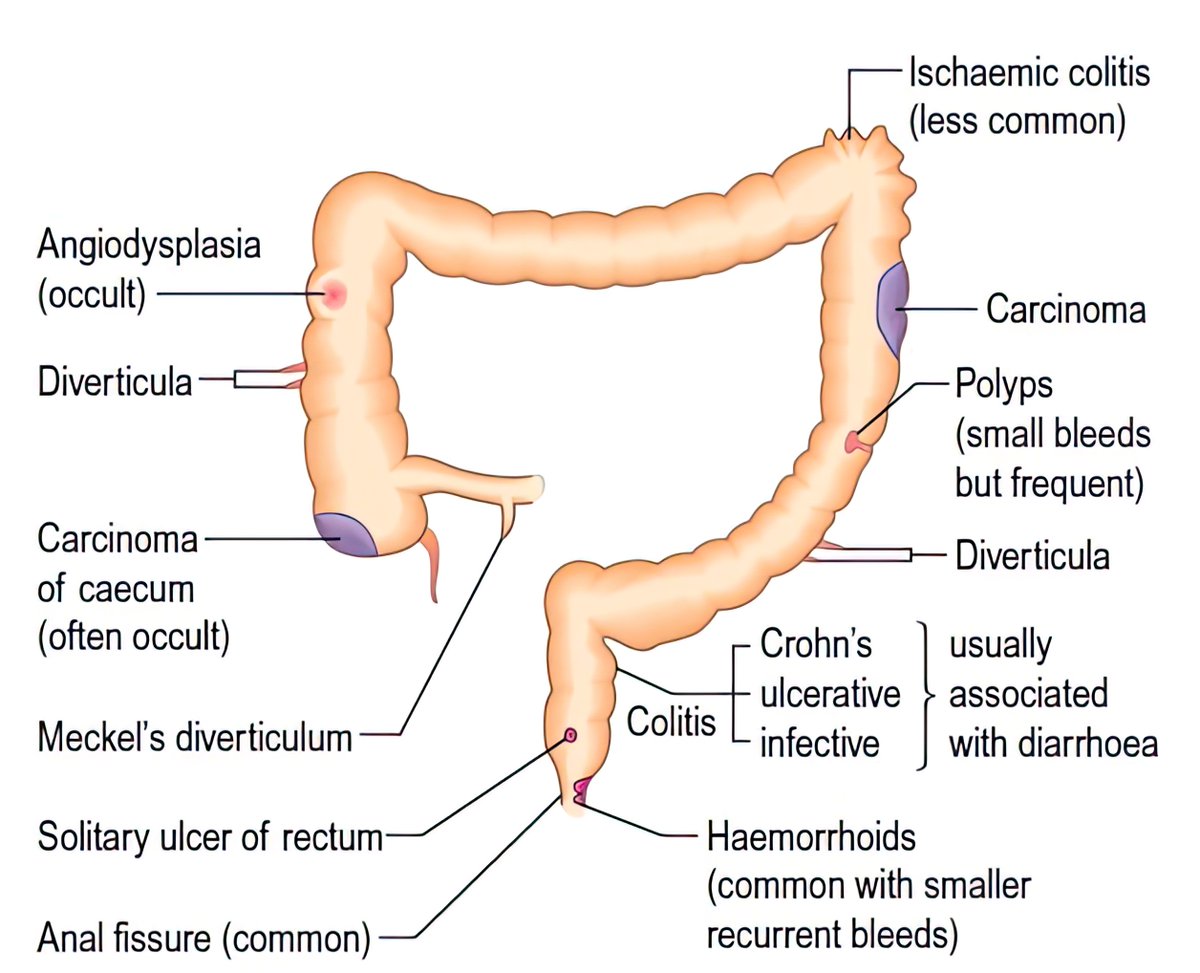
In the case report discussed in the article, a 65-year-old male without a history of inflammatory bowel disease presented with abdominal discomfort, constipation, and weight loss. Imaging and colonoscopy findings initially suggested a primary colon carcinoma, but the subsequent surgical resection revealed a giant inflammatory polyp associated with diverticular disease.
Conclusion
While colon polyps and diverticulitis are distinct gastrointestinal conditions, they can be related in certain cases. Inflammatory polyps, including giant inflammatory polyps, have been associated with diverticular disease and can mimic the appearance of colorectal carcinoma. Careful evaluation and appropriate management are essential to differentiate these conditions and provide the best possible care for patients.
Giant Inflammatory Polyps in Diverticular Disease Mimicking a Colonic Mass: A Potential Malignant Masquerader
- Journal List
- Am J Case Rep
- v.21; 2020
- PMC7347030
As a library, NLM provides access to scientific literature. Inclusion in an NLM database does not imply endorsement of, or agreement with,
the contents by NLM or the National Institutes of Health.
Learn more about our disclaimer.
Am J Case Rep. 2020; 21: e923242-1–e923242-5.
Published online 2020 Jun 29. doi: 10.12659/AJCR.923242
Author information Article notes Copyright and License information Disclaimer
Patient: Male, 65-year-old
Final Diagnosis: Giant inflammatory polyps in diverticular disease
Symptoms: Abdominal pain • constipation
Medication:—
Clinical Procedure: —
Specialty: Pathology
Objective:
Unusual clinical course
Background:
Inflammatory pseudopolyps (IPPs) are a common manifestation in inflammatory bowel disease (IBD) with more cases reported with ulcerative colitis than Crohn’s disease. IPPs can grow to form large polyps which are called giant inflammatory polyps (GIPs). These polyps may cause an obstruction and form a mass-like lesion and surgical resection may be warranted.
IPPs can grow to form large polyps which are called giant inflammatory polyps (GIPs). These polyps may cause an obstruction and form a mass-like lesion and surgical resection may be warranted.
Case Report:
A 65-year-old male without a previous history of IBD presented with abdominal discomfort, poor appetite, constipation, weight loss, and hematochezia. Due to the high suspicion of malignancy, a computed tomography (CT) scan was performed and showed a fixed lesion in the mid sigmoid colon highly concerning for a primary colon carcinoma, with scattered diverticula, and associated with elevated carcinoembryonic antigen (CEA). Colonoscopy was done but the scope could not be passed due to obstruction. Sigmoidectomy was performed which showed a huge noninvasive lesion, which looked like pseudopolypoid serpiginous mass as giant inflammatory polyp, with scattered diverticula. On microscopic examination, pathology showed a villous polyp with numerous inflammatory cells, without any dysplasia or carcinoma.
Conclusions:
GIPs are rarely reported without a history of IBD. Diagnosis of GIPs can be very challenging, and surgery is sometimes indicated for definitive diagnosis.
MeSH Keywords: Colonic Neoplasms, Colonic Polyps, Diverticulum, Colon
Diverticular disease is common in western countries and occurs in patients over the age of 40 years with an incidence of 33–66%, and up to 25% of these patients will develop acute diverticulitis; other complications of diverticular disease are hemorrhage, perforation, and fistulas. Inflammatory pseudo-polyps (IPPs) or giant inflammatory polyps (GIPs) have not been previously discussed as one of the complications or sequelae of long-standing diverticular disease.
IPPs and GIPs have been well documented in the literature as being associated with patients with IBD, specifically ulcerative colitis disease [1]. Ghandi et al. did a retrospective analysis of over 70 patients with IPPs, excluding patients with IBD, and found that 26% of IPPs were found in patients with diverticular disease [2], which confirms that IPPs can be seen in diver-ticular disease as well as IBD.
Inflammatory polyps and pseudopolyps are formed due to enlarged mucosal tags, by repeated peristalsis and fecal stream and by the continuous regenerative and healing processes of the ulcerated epithelium, and with time the ulcerated epithelium exposed to mucosal traction and fecal stream predispose to the formation of inflammatory polyps [3]. The presence of IPPs in patients with IBD can be a sign of previous episodes of inflammation and the presence of IPPs is a marker of the degree of colitis [1,4]. Although the mechanism of IPPs in patients with diverticulosis has not been widely studied, it was reported previously that IPPs developed in a patient after diverticulitis [5]. One theory is that the development process is similar to the process seen in patients with IBD, where during the flare episode of diverticulitis mucosal edema, chronic inflammation develops in the mucosa and forms the polyp.
Sometimes these polyps grow and become large, and when they are larger than 1.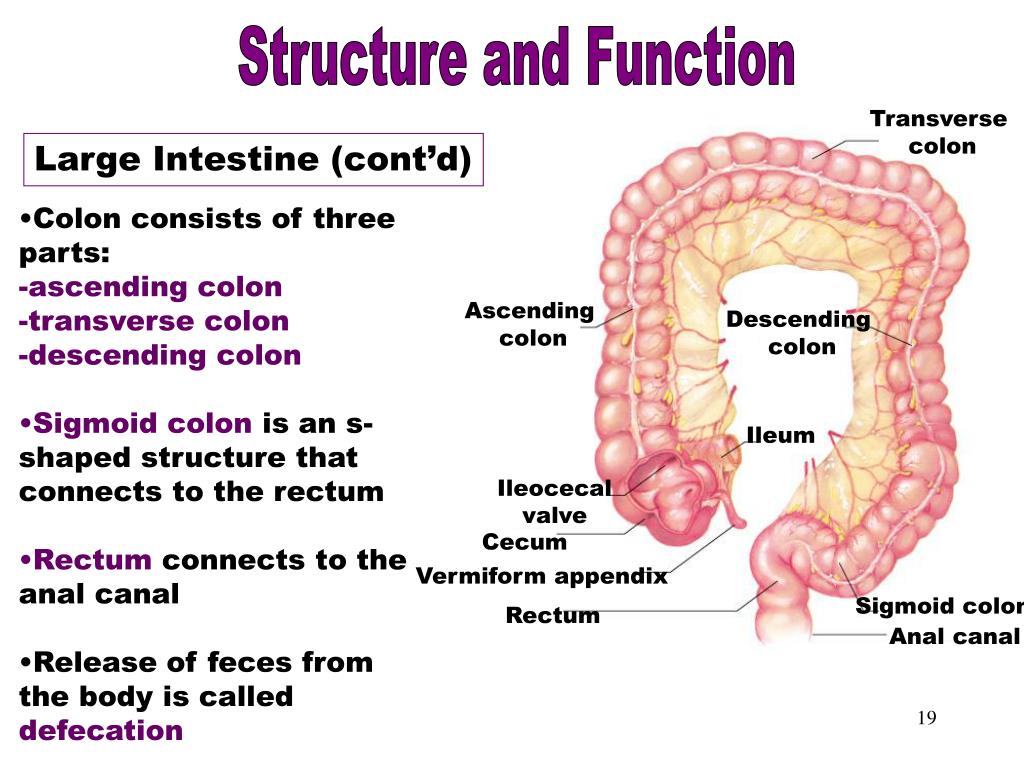 5 cm, they are called GIPs, which have the appearance of a “mass of worms” or a “fungating mass”. These polyps can also form masses that can be mistaken clinically for colorectal adenocarcinoma. There are rare reports of dysplasia developing in GIPs in IBD patients [6], so careful evaluation of the epithelium surface is mandatory to evaluate for dysplasia and also to exclude other neoplastic processes, checking the surface for maturation which is usually seen in reactive and regenerating epithelium but not in dysplasia is crucial.
5 cm, they are called GIPs, which have the appearance of a “mass of worms” or a “fungating mass”. These polyps can also form masses that can be mistaken clinically for colorectal adenocarcinoma. There are rare reports of dysplasia developing in GIPs in IBD patients [6], so careful evaluation of the epithelium surface is mandatory to evaluate for dysplasia and also to exclude other neoplastic processes, checking the surface for maturation which is usually seen in reactive and regenerating epithelium but not in dysplasia is crucial.
A 65-year-old male presented to the Emergency Department (ED) with a long history of abdominal discomfort, bloating, constipation, and hematochezia. He had a poor appetite and complained of fatigue and lost approximately 10 pounds over the last couple of months. He had 2 episodes of hematochezia in the 3 months before his presentation to the ED, with positive fecal occult blood in the stool. The patient’s hemoglobin was stable at 11.4 g/dL. The patient denied nausea, vomiting, fever, night sweating, chills, diaphoresis, or diarrhea. Months later he noticed increased difficulty with defecation and severe constipation and eventually presented to the ED. Physical examination revealed severe abdominal tenderness.
Months later he noticed increased difficulty with defecation and severe constipation and eventually presented to the ED. Physical examination revealed severe abdominal tenderness.
The patient was a smoker who had a past medical history of anxiety, hypertension, depression, and headache, with a past surgical history of cataract removal and glaucoma surgery. The patient did not have a personal or family history of colon polyps, colon cancer, or IBD.
Because of the high suspicion for carcinoma, carcinoembryonic antigen (CEA) was measured and was mildly elevated at 7.7 ng/mL (normal range: 0.0–4.7 ng/mL).
Computed tomography (CT) revealed a fixed lesion in the mid sigmoid colon at approximately 36 cm from the anal verge, concerning for a primary colon carcinoma with the presence of multiple diverticula throughout the mid sigmoid colon (). No polyps were identified. A colonoscopy was attempted but the scope could not be passed beyond the distal sigmoid colon because of the obstructive lesion. A biopsy of the mass showed colonic mucosa with crypt architectural distortion and active inflammation; no dysplasia was identified. Surgical consultation recommended surgical resection of the sigmoid to remove the obstructive mass.
A biopsy of the mass showed colonic mucosa with crypt architectural distortion and active inflammation; no dysplasia was identified. Surgical consultation recommended surgical resection of the sigmoid to remove the obstructive mass.
Open in a separate window
Computed tomography scan revealed a fixed lesion in the mid sigmoid colon at approximately 36 cm from the anal verge concerning for a primary colon carcinoma.
Gross examination
A 19-cm segment of the sigmoid colon (sigmoid resection) was removed; it had a tan focally congested and smooth serosa. On the serosa there was a 5.4×2.8 cm strictured area in the center of the specimen. At the strictured area, the mucosa displayed a 5.9×5.8 cm circumferential area consisting of a red-brown pseudopolypoid, serpiginous, and worm-like mass. On sectioning, the pseudopolypoid lesions appeared confined to the mucosa with no gross invasion into the underlying wall. The wall was gray-white and fibrotic with scattered 0.2 cm possible abscess cavities containing yellow-white, purulent material with possible exudate. Within the pseudopolypoid area, there were multiple diverticula present. The remaining colonic mucosa was tan-pink, glistening, and focally congested with scattered diverticula ().
Within the pseudopolypoid area, there were multiple diverticula present. The remaining colonic mucosa was tan-pink, glistening, and focally congested with scattered diverticula ().
Open in a separate window
Gross photo of the sigmoid colon with giant inflammatory polyp.
Microscopic examination
Microscopic examination of the polypoid area revealed villous-like polyps with irregular projections of the mucosa lined by hyperplastic mucosa containing numerous inflammatory cells, and marked acute inflammation with cystically dilated glands, as well as neutrophilic cryptitis and crypt abscesses (). Mucosal erosion and smooth muscle thickening were also present (). Mucosal and sub-mucosal lymphoid aggregates were identified (). The rest of the mucosa was lined by un-remarkable colonic mucosa. No dysplasia or adenocarcinoma was identified. Forty-one lymph nodes were negative for malignancy.
Open in a separate window
Inflammatory polyp with crypt abscess (hematoxylin and eosin-stained section, original magnification 100×).
Open in a separate window
Mucosal erosion and smooth muscle thickening (hematoxylin and eosin-stained sections, original magnification 20×).
Open in a separate window
(A, B) Mucosal and sub-mucosal lymphoid aggregates are present (hematoxylin and eosin-stained sections, original magnification 40×, 20×, respectively).
IPPs and GIPs are common in patients with IBD, most commonly located in the transverse colon followed by the descending colon [7]. In our patient, there was no previous history of IBD, diverticulitis, or diverticulosis. His diverticula were seen at the time of imaging which suggested that the patient could have had previous undocumented inflammation before the time of presentation. GIPs have rarely been reported in the literature to present without IBD, mimicking colonic carcinoma [8,9].
Usually, patients with GIPs present with hematochezia, weight loss, obstruction, and abdominal pain with discomfort [10]. It has been proposed that GIPs presentation are correlated with the duration and severity of IBD [11]. GIP is a common pitfall for clinicians and radiologists because it is similar to neoplastic lesions and is frequently mistaken as colon cancer, as in our case which was highly suspicious for malignancy which prompted large surgical excision and thorough evaluation of lymph node metastasis.
GIP is a common pitfall for clinicians and radiologists because it is similar to neoplastic lesions and is frequently mistaken as colon cancer, as in our case which was highly suspicious for malignancy which prompted large surgical excision and thorough evaluation of lymph node metastasis.
The differential diagnosis of IPP and GIP includes mucosal pro-lapse-induced polyp. Mucosal prolapsed-induced polyps, especially in the left colon, might be confused with IPPs and colon cancer. These polyps have areas of hyperplastic glands, epithelial denudation; polymorphic inflammatory infiltrate in lamina propria, with dense fibrosis and vascular congestion. Mucosal pro-lapse polyps show fibromuscular hypertrophy that extends into the lamina propria, which are not present in IPPs [12]. Other entities in the differential diagnosis may include villous adenoma, but there is no dysplastic epithelium, and possibly lymphoma depending on the degree of amount of inflammatory infiltrate present.
Our patient had a slight increase in CEA which might be another pitfall for considering malignancy, but CEA can be elevated in non-malignant conditions like smoking, IBD, pancreatitis, and cirrhosis [13].
The prognosis for GIPs is usually good, with rare recurrences reported, and the presence of inflammation at the resection margin might predict recurrence or persistence of the disease [14].
As for treatment, IPPs might regress after healing of the underlying process. Depending on the severity and the size of the polyp, the treatment can be divided into medical treatment and endoscopic or surgical intervention. Mesalazine and azathioprine have been used successfully in IBD patients with GIPs [15]. In general, surgery is not mandatory for IPPs and GIPs if endoscopic biopsies do not show invasive tumor [16,17]. Endoscopic polypectomy is another method for removal of IPPS [18]. When endoscopic therapies like polypectomy fail to manage complications like obstruction, intussusception, or uncontrolled bleeding, then surgical procedures like hemicolectomy or sigmoid segmental resection might be required and inevitable.
In summary, we present a new case of GIP in a patient with an incidental finding of diverticulosis presenting as colonic obstruction and a mass-like lesion invoking a strong clinical suspicion for a primary colonic neoplasm.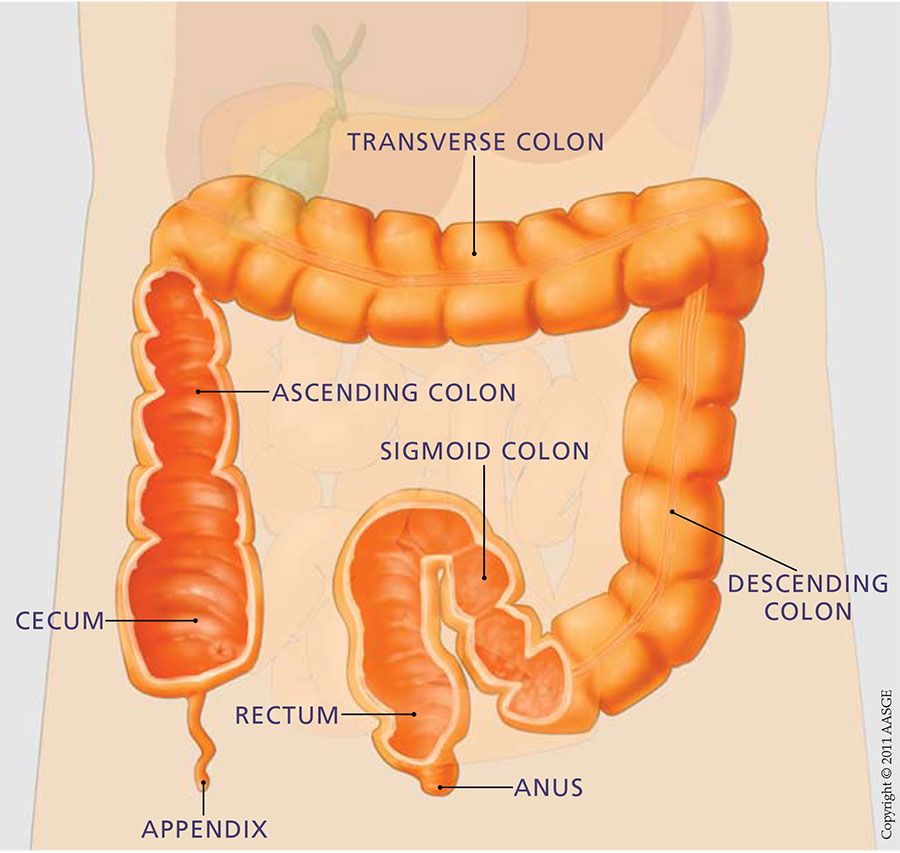 Pathologists, surgeons, and gastroenterologists should be aware of this entity and the potential that it may masquerade as a colonic mass-like lesion with obstruction. The major clinical question is a surgical resection necessary is such a case? The answer depends on the clinical situation and if complications such as obstruction are present or if there is a high index of suspicion for a colonic neoplasm. In those instances, surgery to relieve the patient’s symptoms and provide a definitive pathologic diagnosis is warranted. However, medical management might be an option in other instances.
Pathologists, surgeons, and gastroenterologists should be aware of this entity and the potential that it may masquerade as a colonic mass-like lesion with obstruction. The major clinical question is a surgical resection necessary is such a case? The answer depends on the clinical situation and if complications such as obstruction are present or if there is a high index of suspicion for a colonic neoplasm. In those instances, surgery to relieve the patient’s symptoms and provide a definitive pathologic diagnosis is warranted. However, medical management might be an option in other instances.
GIPs are rarely seen in patients without a previous history of diverticulitis, or IBD. GIPs might present as a neoplasm mimicking a colonic malignancy. In this case, the patient’s history, elevated tumor marker levels, and imaging studies made the clinical team consider malignancy. The diagnosis of GIP is very challenging and sometimes cannot be accurately diagnosed without surgery.
Conflict of interest
None.
1. Politis DS, Katsanos KH, Tsianos EV, Christodoulou DK. Pseudopolyps in inflammatory bowel diseases: Have we learned enough? World J Gastroenterol. 2017;23:1541–51. [PMC free article] [PubMed] [Google Scholar]
2. Gandhi AV, Malik SM, Palazzo JP. Colorectal inflammatory pseudopolyps: A retrospective analysis of 70 patients. Open J Pathol. 2014;4(3):7. [Google Scholar]
3. Lumb G. Pathology of ulcerative colitis. Gastroenterology. 1961;40:290–98. [PubMed] [Google Scholar]
4. Nagashima M, Sugishita Y, Moriyama A, et al. Tumor-like growth of giant inflammatory polyposis in a patient with ulcerative colitis. Case Rep Gastroenterol. 2013;7:352–57. [PMC free article] [PubMed] [Google Scholar]
5. Seo HI. Two hyperemic polypoid lesions in the colon. Intes Res. 2016;14:379–80. [PMC free article] [PubMed] [Google Scholar]
6. Dukes CE. The surgical pathology of ulcerative colitis. Ann R Coll Surg Engl. 1954;14:389–400. [PMC free article] [PubMed] [Google Scholar]
7.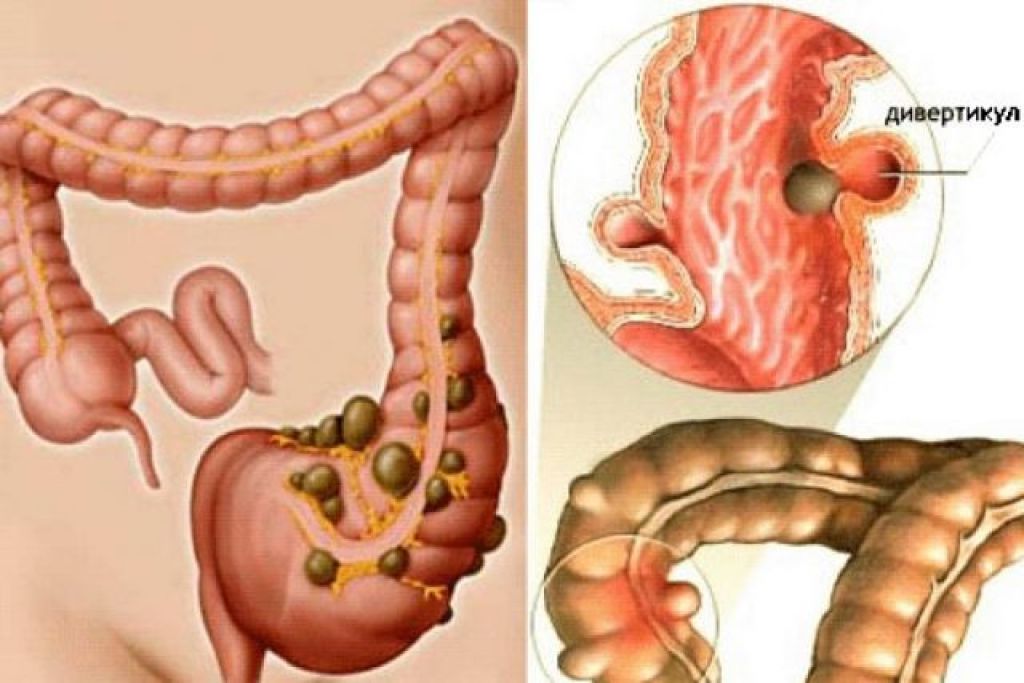 Maggs JRL, Browning LC, Warren BF, Travis SPL. Obstructing giant post-inflammatory polyposis in ulcerative colitis: Case report and review of the literature. J Crohns Colitis. 2008;2:170–80. [PubMed] [Google Scholar]
Maggs JRL, Browning LC, Warren BF, Travis SPL. Obstructing giant post-inflammatory polyposis in ulcerative colitis: Case report and review of the literature. J Crohns Colitis. 2008;2:170–80. [PubMed] [Google Scholar]
8. Wolf EM, Strasser C, Geboes K, et al. Localized giant inflammatory polyp of the colon in a patient without inflammatory bowel disease. Virchows Archiv. 2011;459:245–46. [PubMed] [Google Scholar]
9. Tan KH, Meijer S, Donner R. Giant localized pseudopolyp of the colon without colonic inflammatory disease – case report. Neth J Surg. 1987;39:95–97. [PubMed] [Google Scholar]
10. Naymagon S, Mikulasovich M, Gui X, et al. Crohn’s-like clinical and pathological manifestations of giant inflammatory polyposis in IBD: A potential diagnostic pitfall. J Crohns Colitis. 2014;8:635–40. [PubMed] [Google Scholar]
11. Abou Rached A, Saba J, El Masri L, et al. Obstructive giant inflammatory polyposis: Is it related to the severity or the duration of the inflammatory bowel disease? Two case reports. Case Rep Gastrointest Med. 2018;2018:3251549. [PMC free article] [PubMed] [Google Scholar]
Case Rep Gastrointest Med. 2018;2018:3251549. [PMC free article] [PubMed] [Google Scholar]
12. Chetty R, Bhathal PS, Slavin JL. Prolapse-induced inflammatory polyps of the colorectum and anal transitional zone. Histopathology. 1993;23:63–67. [PubMed] [Google Scholar]
13. Perkins GL, Slater ED, Sanders GK, Prichard JG. Serum tumor markers. Am Fam Physician. 2003;68:1075–82. [PubMed] [Google Scholar]
14. Sheikholeslami MR, Schaefer RF, Mukunyadzi P. Diffuse giant inflammatory polyposis: A challenging clinicopathologic diagnosis. Arch Pathol Lab Med. 2004;128:1286–88. [PubMed] [Google Scholar]
15. Choi YS, Suh JP, Lee IT, et al. Regression of giant pseudopolyps in inflammatory bowel disease. J Crohns Colitis. 2012;6:240–43. [PubMed] [Google Scholar]
16. Katz S, Rosenberg RF, Katzka I. Giant pseudopolyps in Crohn’s colitis. A non-operative approach. Am J Gastroenterol. 1981;76:267–71. [PubMed] [Google Scholar]
17. Lim YJ, Choi JH, Yang CH. What is the clinical relevance of filiform polyposis? Gut Liver. 2012;6:524–26. [PMC free article] [PubMed] [Google Scholar]
2012;6:524–26. [PMC free article] [PubMed] [Google Scholar]
18. Rutter M, Saunders B, Emmanuel A, Price A. Endoscopic snare polypectomy for bleeding postinflammatory polyps. Endoscopy. 2003;35:788–90. [PubMed] [Google Scholar]
Articles from The American Journal of Case Reports are provided here courtesy of International Scientific Information, Inc.
Bowel polyps – NHS
Bowel polyps are small growths on the inner lining of the large intestine (colon) or rectum.
Bowel polyps are very common, affecting around 1 in 4 people aged 50 or over.
They’re slightly more common in men.
Some people develop just 1 polyp, while others may have a few.
Symptoms of bowel polyps
Bowel polyps do not usually cause any symptoms, so most people with polyps will not know they have them.
They’re often picked up during screening for bowel cancer.
But some larger polyps can cause:
- a small amount of slime (mucus) or blood in your poo (rectal bleeding)
- diarrhoea or constipation
- pain in your tummy (abdominal pain)
Bowel cancer risk
Polyps do not usually turn into cancer. But if some types of polyps (called adenomas) are not removed, there’s a chance they may eventually become cancerous.
Doctors believe that most bowel cancers develop from adenoma polyps.
But very few polyps will turn into cancer, and it takes many years for this to happen.
Because of the risk of bowel polyps developing into cancer, your doctor will always recommend getting polyps treated.
Read more about bowel cancer
Treatments for bowel polyps
There are several methods for treating polyps. The most common procedure involves physically removing the polyp using a wire loop.
The most common procedure involves physically removing the polyp using a wire loop.
This happens during a procedure called a colonoscopy. During a colonoscopy a flexible tube called a colonoscope is passed through your bottom and up into your bowel.
The colonoscope has a wire attached to it through which an electric current is passed. The wire is used to either burn off (cauterise) or cut off (snare) the polyp. Both methods are painless.
Rarely, surgery may be needed to treat polyps by removing part of the bowel.
This is usually only done when:
- the polyp has some cell changes
- the polyp is very large
- there are lots of polyps
After the polyp or polyps have been removed, they’re sent to specialists in a laboratory, who’ll inform your consultant if:
- the polyp has been completely removed
- there’s any risk of it regrowing
- there’s any cancerous change in the polyp
If there’s a cancerous change in the polyp, you may need further treatment (depending on the degree and extent of change).
Your specialist will be able to advise you about this.
Causes of bowel polyps
The exact cause of bowel polyps is not known. It’s thought they’re caused by the body producing too many cells in the lining of the bowel.
These extra cells then form into a bump, which is the polyp.
You may be more likely to develop bowel polyps if:
- a member of your family has had bowel polyps or bowel cancer
- you have a condition that affects your gut, such as colitis or Crohn’s disease
- you’re overweight or smoke
Diagnosing bowel polyps
Bowel polyps are usually found when your bowel is being looked at for another reason or during screening for bowel cancer.
If polyps are found, a colonoscopy or CT colonography is needed to view the whole of the large bowel and remove the polyps.
Monitoring bowel polyps
Some people with a certain type of polyp may be at risk of it coming back in the future (recurring).
Depending on the results of your diagnosis your doctor may recommend you return for further testing in 1 to 3 years.
This is to catch any further polyps that may develop and potentially turn into bowel cancer.
Page last reviewed: 23 September 2020
Next review due: 23 September 2023
Computed tomography (CT) of the intestine: prices in St. Petersburg
Virtual colonoscopy of the intestine is a modern X-ray method for examining the large intestine, which allows you to study the condition of the colon and identify polyps, benign and malignant tumors, as well as single and multiple polyps, changes in the length of the intestine with additional looping.
As a rule, computed tomography reveals whether there are oncological neoplasms and polyps, so the main indications for virtual colonoscopy of the intestine are:
- blood in stool
- frequent constipation or diarrhea
- abdominal pain of unknown etiology
- increased flatulence
- polyps or tumors in the colon
Diagnosis for the prevention of oncology is recommended to be done annually:
- persons of mature age (40 years and older)
- at risk (if there are oncological diseases in the family)
- if the work is related to radiation, or other harmful effects on the body
- patients who have frequent bowel movements, anemia, sudden weight loss or unexplained fever
- if endoscopy is contraindicated
Due to irradiation, MSCT of the intestine is not performed in children if it is possible to apply a conventional endoscopic procedure. Virtual colonoscopy for children is done only urgently, in a hospital, when there is no other way to check the intestines.
Virtual colonoscopy for children is done only urgently, in a hospital, when there is no other way to check the intestines.
Restriction to conduct is pregnancy and some other factors. More information about them can be found on the website in the Contraindications section.
In preparation for a colonoscopy, the patient must follow a special diet for three days. In individual cases, preparation may be shortened. You can read more about this in How to Prepare.
When more precise detailing of the state of tissues near the colon, liver, kidneys, pancreas is necessary, a contrast agent is used. The decision to conduct diagnostics with contrast is made by the radiologist together with the attending physician.
In addition to MSCT, Ramsey Diagnosis centers can do MRI of the pelvis.
Fibrocolonoscopy is included in the gold standard of research in diseases of the colon. However, 5 to 10% of patients are unable to undergo this procedure for various reasons. One of the reasons is the pain of the procedure, which is noted by patients.
One of the reasons is the pain of the procedure, which is noted by patients.
Unlike FCS, the virtual (MSCT) procedure is absolutely painless, and there is no risk of damage to the intestinal walls. The procedure is much easier to tolerate by patients, since it does not use an endoscope. The CTC method makes it possible to detect malignant tumors at an early stage and to diagnose polyps, diverticula and formations in the colon with high accuracy.
A large number of slices, for example, 64 slices in the Optima CT660 expert-class tomograph from the world’s leading manufacturer – General Electric (GE Healthcare) allows you to make a three-dimensional image of organs and obtain detailed information about the anatomical structure and condition of the colon, the presence of neoplasms, pathological processes, etc.
An important distinguishing feature of the method is the ability to see the spread of the tumor beyond the colon, the assessment of the lymph nodes and adjacent organs of the abdominal cavity with obvious pathological changes (for example, metastases).
The cost of service “virtual colonoscopy of the intestine” , with all its advantages, is two times lower than the cost of fibrocolonoscopy with the use of drug anesthesia or anesthesia.
Please note that this study lasts 40 minutes, in difficult cases the time can be increased without increasing the cost of the service.
Without contrast
- Pregnancy
With contrast
- Allergy to iodine
- Renal failure
- Severe diabetes mellitus
- Pregnancy
- Diseases of the thyroid gland
If the patient has any type of allergy or intolerance to drugs, it is necessary to warn the medical staff about this in advance!
Standard study preparation takes 3 days.
In individual cases, the preparation can be reduced to one day.
- Slag free diet.
72 hours before the examination, it is necessary to exclude vegetables, fruits, potatoes, greens, mushrooms, legumes, black bread, berries (raspberries, currants, grapes, kiwi – in any form) from the diet, seeds, nuts, carbonated drinks, milk, meat, fish in sauce, smoked sausage.

Allowed : broth, tea, semolina, egg, boiled meat, boiled sausage, fish, cheese, butter, sour milk products, except cottage cheese, coffee, non-carbonated drinks, fruit juices without pulp.
It is not necessary to fast the day before and on the day of the examination. You can drink broth, tea.
- Use for cleaning preparations
- For high-quality bowel cleansing, you need to purchase 3 packs of Fortrans at the pharmacy. You need to take the drug within three days before the study. The solution is taken gradually, 1 liter (1 packet per 1 liter of boiled water) for 1-2 hours (1 glass in 15 minutes in separate sips) starting from 14 hours. Liquid discharge appears 1 hour after the end of each serving.
- Buy at the pharmacy 1 bottle (20 ml) iodine-containing radiopaque preparation (Urografina, Omnipaque, Optirey). The day before, the day before the study, after each meal (breakfast, lunch and dinner) drink half a glass of water with 1/3 of the drug dissolved in it.

Would you like us to call you back?
Leave a request and we will answer all your questions in detail!
Discounts, benefits
The cost of diagnostics includes:
- Examination on the Optima CT660 tomograph, the world’s leading manufacturer General Electric (USA)
- Detailed and exhaustive conclusions made on the basis of images by a highly qualified radiologist
- Round-the-clock access to your personal account to view all your research and conclusions
- Internal quality control of studies
- 100% image quality guarantee
Detailed information about prices can be found in the section “Costs of services”
Familiarize yourself with the benefits and ongoing promotions on the pages: “Promotions and discounts”, “Discounts and benefits”
Computed tomography of the intestine
Medical Research and Education Center of Lomonosov Moscow State University
|



